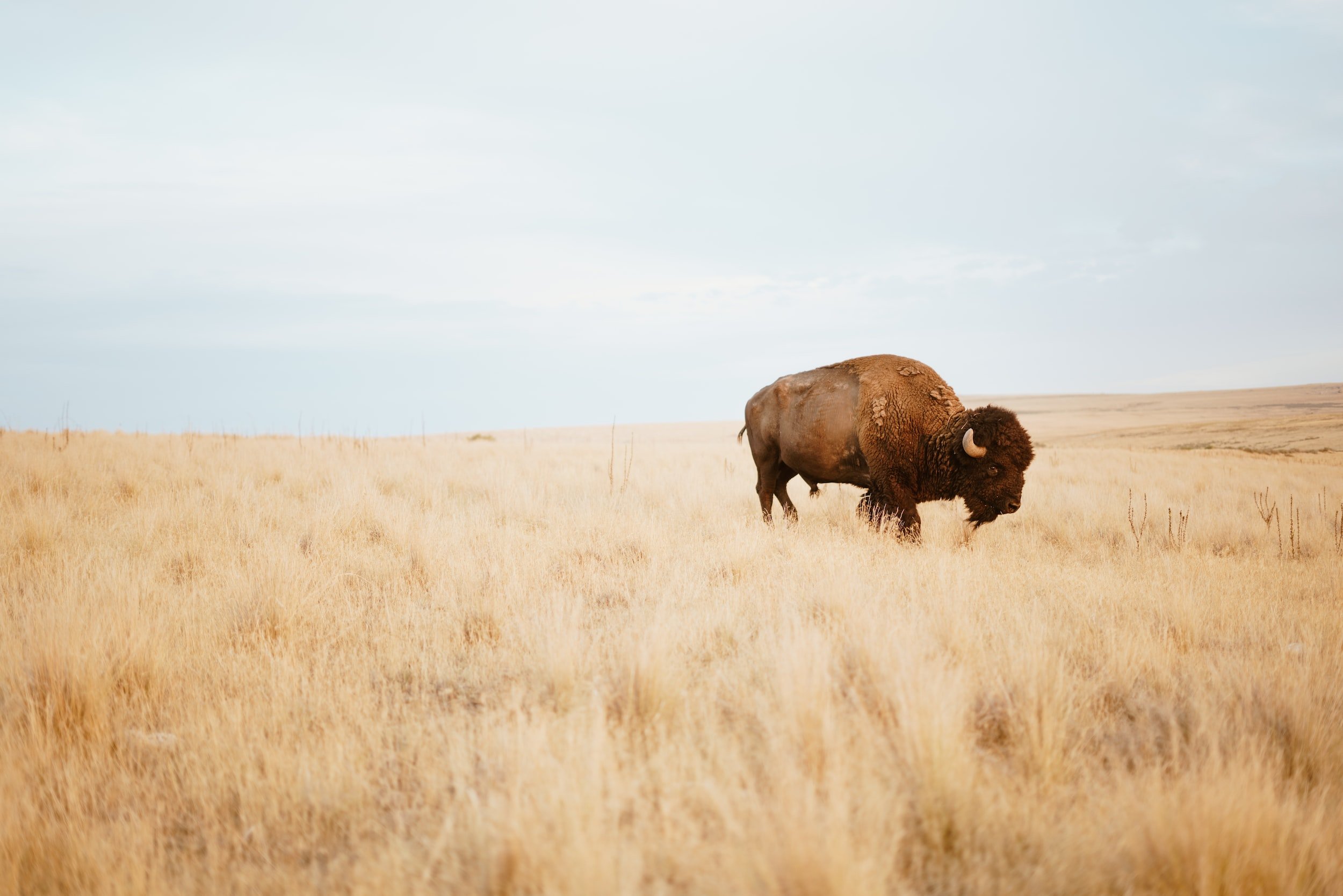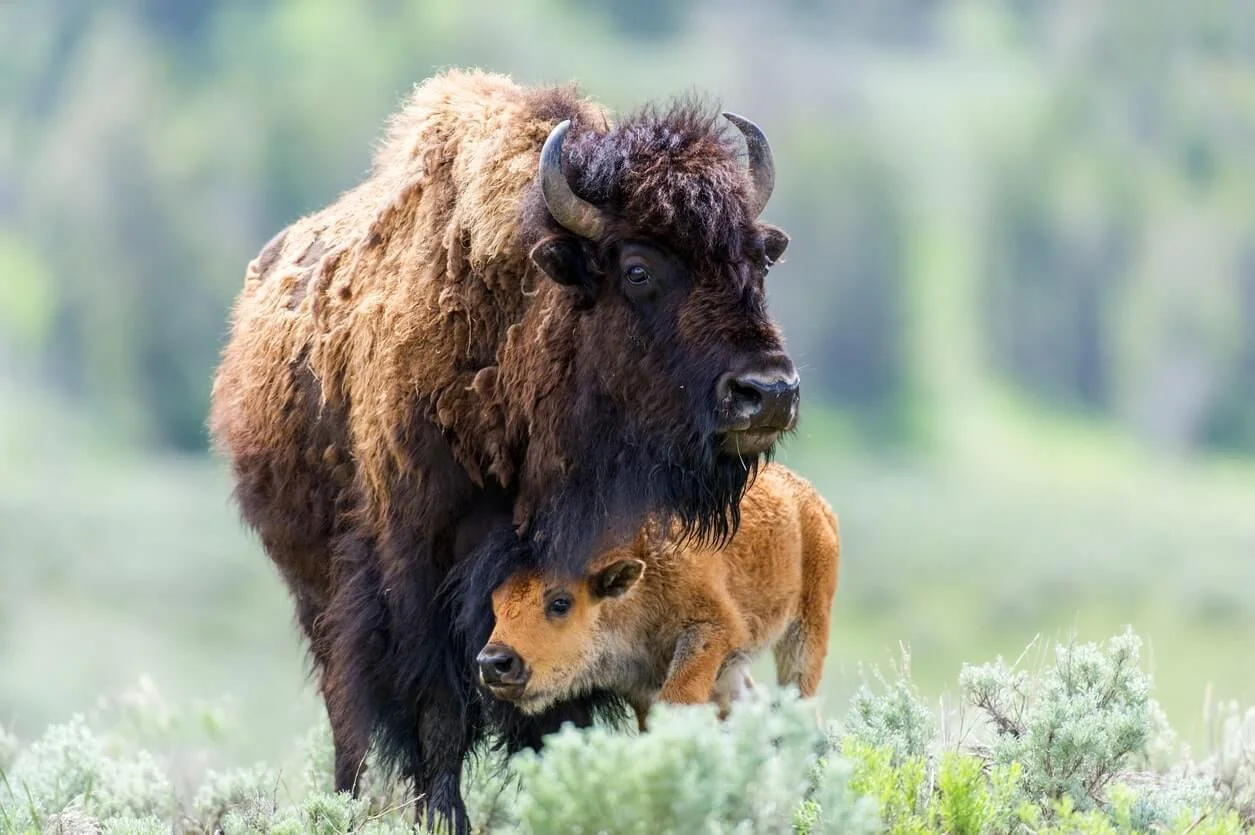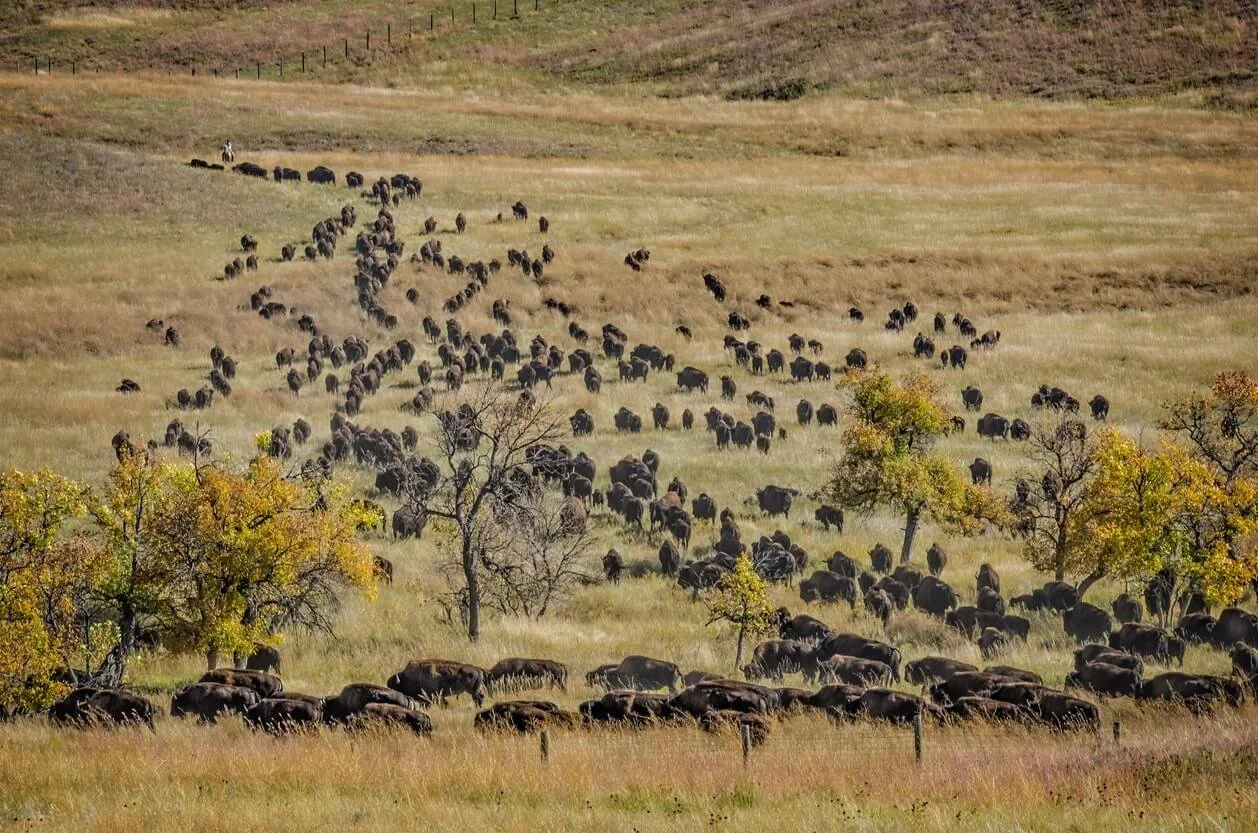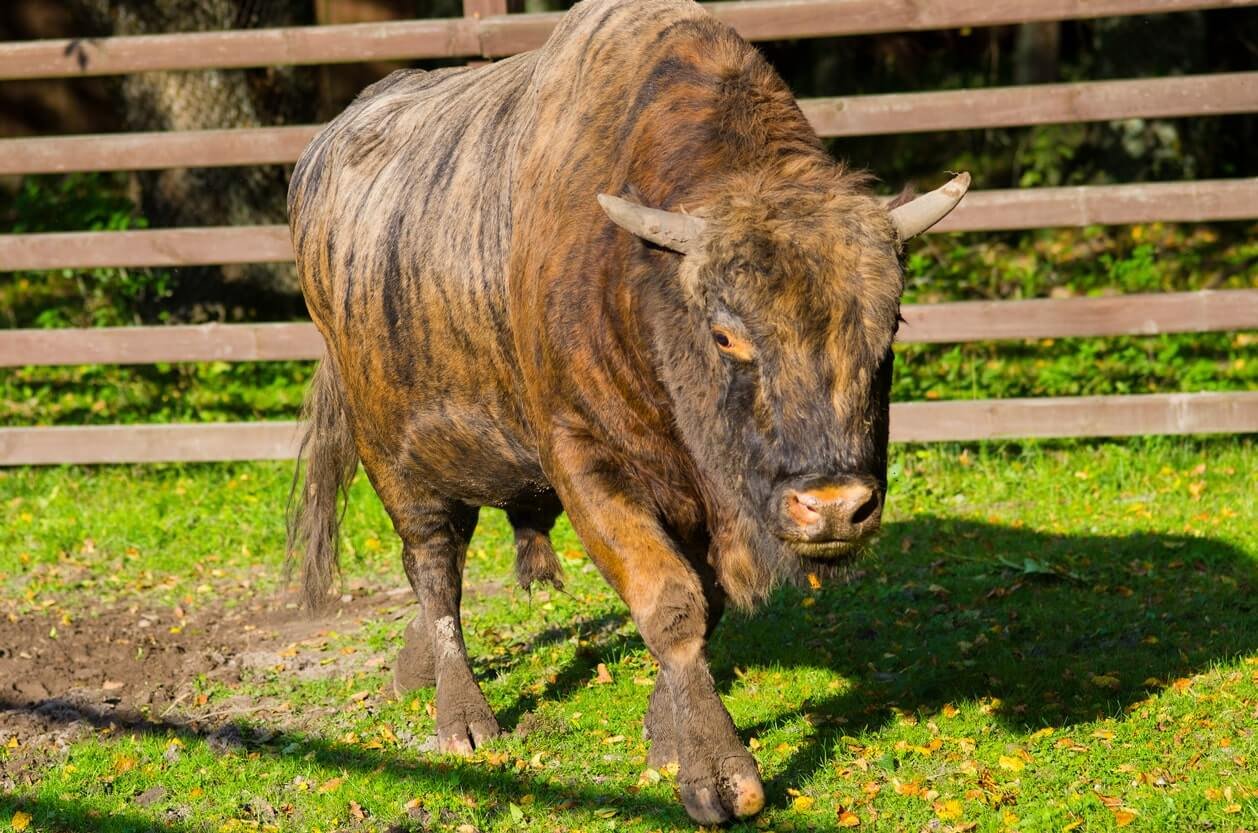The History of The Legendary American Bison
Discover > Truly Texan > The History of The Legendary American Bison
Years ago, tens of millions of bison (What wine goes well with bison?) roamed the great plains in herds some hundred-thousand strong. Old journal entries from witnesses from the 17th, 18th, and 19th centuries describe seeing a sea of bison so large they stretched far beyond the horizon.
The species came dramatically close to extinction towards the end of the 19th century because of 3 deciding factors, foreign disease, hunting, and the attempted sabotage of the native Americans by European settlers during times of war. Before getting into that, however, it’s worth taking a closer look into the history and evolution of great bovine.
Evolution of the Bison
Etymology
Another very common name for bison is the American buffalo or simply buffalo. Despite not being a suitable term for the bison, the name buffalo was first used to describe the herbivores by the french explorer, Samuel de Champlain in 1616.
There are two subspecies of American bison, the plains bison, which is smaller in size with a more rounded hump, and the wood bison, taller, heavier, with a more square hump.
European Vs American Bison
While both species of bison are similar, there are a few key differences between them. European bison tend to be taller although lighter than their American counterparts. Aside from having shorter legs, the American bison grazes more, mainly because of how their necks are set differently.
American bison are hairier and their faces have some notable differences, mainly how far their nose protrudes from their face. Another notable difference is their horns. European bison’s horns point more forward through the plane of its face which makes it ideal for fighting and interlocking. The American bison’s horns are more adapt to charging and ramming.
Behavior & Ecology
Bison are migratory, herd animals that used to travel in herds tens to hundreds of thousands strong. They spend their days grazing while they migrate north for the summer or south for the winter. A grazing herd can move an average of 3 miles every day.
Although you’d likely find a couple of older males in a female herd, the sexes are mostly separated into maternal herds and bachelor herds. They mingle when the mating season comes around from July through September. The dominant males often mate within the first two weeks of the mating season, ‘tending’ to a female in heat by following her and blocking her vision of other challenging males.
Dominance is closely related to the time of year that the bison’s parents mated. Since stronger, dominant, more genetically sound males tend to breed early in the season, the stronger calves tend to be born earlier.
After insemination and conception, gestation lasts 285 days. The calves nurse for up to 18 months or until the cow gets pregnant once again. Bison sexually mature between 2 and 3 years at which point they’re either ready to separate into a bachelor herd or in the case of females, to mate.
Interestingly, bison (particularly males) display homosexual behavior. In the case of males, it’s unlikely that it’s a display of dominance, rather a form of bonding and gaining sexual experience.
Genetics
Generations of inbreeding are just one of the disastrous effects of wiping out the vast majority of bison. The less bison there are, the smaller the breeding groups are, the smaller the gene pool is. A herd or species without a lot of genetic variation is at extreme risk of things like disease (since all these bison have the same vulnerabilities).
Purebred bison are rare in America (around 1 in 30) because of extensive breeding with domesticated cattle.
Domestication
While native Americans never attempted to domesticate bison, Europeans definitely did, and without much success. Bison are known to be very temperamental, a full-grown male easily exceeds a ton in weight and can reach speeds of 35–40 mph. Their temperament gives them the tendency to charge and ram things (like fences) and other animals (like people).
As a solution, settlers started breeding the native American bison with their imported cattle which created a tamer breed known today as beefalo. The meat is very similar to beef with slightly less cholesterol.
Historical Significance of the Bison
Native Americans
No civilization has depended more on the bison for food, hide, and bones than the native Americans. For better or for worse the bison was more than just food and raw material. It was a sacred animal and a religious symbol. It’s hard to measure just how much significance the herbivore had, everything from weapons, shields, housing, sewing equipment, and clothing, were just some of the most important uses for the bison.
European Settlers
It’s safe to say that the ‘white man’ doesn’t have any spiritual, sacred, or religious claim to the bison, quite the contrary. European settlers were mostly cattle farmers, which they decided to bring to the new frontier.
How the Bison Serviced the Great Plains
Regenerative cattle farming replicates the migration habits of herds of herbivores like the bison on a smaller scale. Rotational grazing involves moving a group of cattle into a different section of untouched land for upwards of one day (depending on the size of the sectioned piece of land). The cattle move in, graze on the grass which makes space for new sprouts to grow, leave hoofprints in the soil that collect and store water, and leave manure and nitrogen (in the form of urine).
The bison provided the same service for the great plains, although instead of people forcing the bison onto fresh land every day, predators like wolves, bears, and prairie dogs did. This process kept the land in pristine condition with beautifully rich soil, vibrant grasslands, and a huge diversity of different animals and species.
How the Bison Came Close to Extinction
Hunting
What came following the mass immigration of Europeans was one of the fastest species extinction at the hands of a man in history. When settlers started hunting the animals in mass at the beginning of the 18th century there were well over 60 million. By the end of the 19th, hundreds were left roaming the great plains.
The incentive to kill off the species were often far more sinister than the production of commercial goods. The wholesale slaughter of bison was endorsed by the government in an effort to wipe out the native American population through starvation in times of war.
It’s important to note that some native American tribes also greatly contributed to the near extinction. Some tribes, like the Comanche, also hunted the bison by the hundred thousand each year, for commercial and food purposes.
Disease
With the foreign cattle came lots of foreign diseases, without the means to fight these diseases, it quickly became the most detrimental thing to happen to the bison. Like the native populations, the disease made the largest impact on the bison population. Influenza, smallpox, measles, and typhus fever were just a few of the most fatal diseases Europeans bought over.
Railroads
Railroads and the companies that built them, like the Kansas Pacific Railroad, made proactive steps to kill the bison by hiring hunters, most notably William Frederick "Buffalo Bill" Cody who slaughtered over 4000 bison in under 2 years.
The massive herds of bison caused problems for the railroads. A herd thousands-strong had the potential to damage tracks and locomotives, and to delay a train for up to days. This prompted activities like shooting herds of bison out of trains windows while it traveled as fast as a passing herd. People would simply stick their gun barrels out of the window of the moving train, and fire at a herd of bison.
Drought
The plains experienced one of the worst recorded droughts in history starting in 1845. This put the final nail in the coffin for the once prosperous species, and while the return of the rains in 1860 helped recover some of the herds, the damage had already been done.
The First Revival Efforts
In 1874 the first effort to preserve the bison was made by President Ulysses S. Grant, who pocket vetoed a bill that allowed for the mass hunting of bison. This unfortunately wasn't the end however as the majority of the US government was still in favor of wiping out the Indians. Buffalo Bill himself called for the conservation of the mammals as he witnessed the quick demise of the herds.
It wasn't until the early 20th century, around 1905 that William Temple Hornaday founded the American Bison Society with the support of President Theodore Roosevelt. James "Scotty" Philip was a Scottish-born rancher who acquired the first small herd of bison in an effort to revive the species. He bought a small herd of 5 bison from Dug Carlin which by the end of Scotty’s life, ballooned to a whopping 1200 individual bison.
Michel Pablo and Charles Allard spent more than 20 years assembling one of the largest collections of purebred bison on the continent. 300 by the time of Allard's death. After the US declined to buy the herd, Pablo struck a deal with the Canadian government and got the bison shipped north.
Yellowstone Park is home to a bison heard of around 5000. The herds that roam Yellowstone are particularly important because they're reminiscent of the original herds that once shook the landscape. They’re descended directly from the remaining 23 bison that were left in yellowstone at the end of the 19th century.
Bison Herds Today
There were many more conservation efforts that took place after the turn of the 19th century, and many are still in place today. Bison hunting is legal in some states with very heavy regulation. Montana for example was one of the first to re-introduce bison hunting, only issuing 50 permits, however.
Today the bison roam the great plains and beyond over half a million strong. It’s only a drop in the ocean of what they used to be, but with conservation efforts still constantly put into place, they continue to thrive for future generations.







